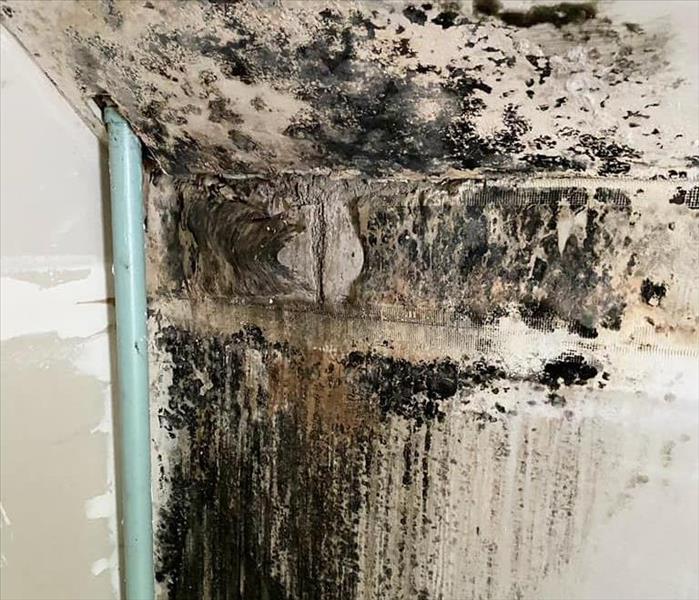Mold in Your Home Due to Unnoticed Water
8/26/2020 (Permalink)
 Mold can vary in severity and can spread over a large area as seen on this wall from an old abandoned home.
Mold can vary in severity and can spread over a large area as seen on this wall from an old abandoned home.
When water goes unnoticed in the home, it can lead to the growth of mold. Mold is a fungus that grows in moist, dark environments, and it can thrive anywhere these conditions are present. It is a particular hazard in the home, where people often spend the majority of their time. But the first step to mold remediation is to recognize the signs of an infestation. Below, get to know some common types of household mold and their signs and characteristics.
A Guide to Common Household Mold
1.Alternaria
Alternaria is the most common form of allergenic mold. You will mostly find it in damp areas, especially around bathroom sinks, showers, tubs, and leaking pipes. It is dark in color, either gray, brown, or black, and has a velvety texture. It is known to spread quickly. Reduce the risk of Alternaria growth by promptly fixing all plumbing leaks. Shut off all taps every time you use them, and wipe up the moisture from walls and floors after showers and baths.
2. Chaetomium
Chaetomium grows in walls, roofs, and flooring that have experienced water damage, often from leaks or burst or broken pipes. The mold starts out as a whitish color and grows darker over time. It also has a cotton-like appearance and a musty, stale odor. If you’re unsure of the source of the water damage causing the infestation, a mold removal professional can help you pinpoint the cause.
3. Penicillium
Penicillium is blue or green in color and tends to flourish in water-damaged environments. Its spores are known to travel through the air, where they can be breathed in. Minimize the chance of Penicillium growth by eliminating high humidity in the air. A dehumidifier can help in this process, and you should also address leaks in a timely manner.
4. Stachybotrys
Stachybotrys is another word for black mold, but its color can range anywhere from dark green to inky black, and its texture is slimy. It thrives in moist areas with high humidity. Like other types of mold, Stachybotrys starts with some type of water damage. Aim to keep the household dry and the humidity low, and have all plumbing issues repaired right away. Never try to remove Stachybotrys by yourself. Special equipment and protective wear are required, so schedule remediation by a mold removal professional.
A mold remediation team will ensure any of the above dangers are eliminated from your home. SERVPRO of Cheshire County has been serving the Westmoreland, NH, area since 1978. They offer mold removal services, as well as fire and water damage restoration and biohazard cleanup. They work with both homes and businesses to keep environments safe and comfortable. Call (603) 352-7251 or visit them online to request a quote.





 24/7 Emergency Service
24/7 Emergency Service